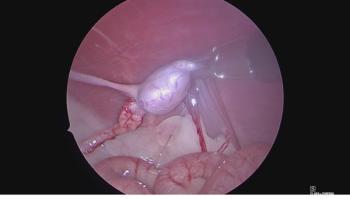
Survival Times of Dogs with Pituitary-Dependent Hyperadrenocorticism With and Without Treatment
In a recent study, dogs with pituitary-dependent hyperadrenocorticism treated with trilostane had significantly longer survival times than those that received no treatment.
In a recent study, dogs with pituitary-dependent hyperadrenocorticism (PDH) treated with trilostane had significantly longer survival times than those that received no treatment. The results indicate that withholding treatment from dogs with PDH might increase the risk of death, say the authors of the report, which was published in the Journal of Veterinary Internal Medicine.
“To the best of our knowledge, this represents the largest study to date to report survival times of untreated dogs with PDH,” write the authors. Although previous studies have reported median survival times in dogs treated with trilostane, no large studies have examined survival times in untreated dogs.
Hyperadrenocorticism can be associated with pulmonary thromboembolism, pancreatitis, infections, diabetes mellitus, and other conditions that may increase the risk of death. Canine patients are usually treated because of their clinical signs rather than the mortality risk, say the authors, although owners sometimes decline treatment because of cost, potential adverse effects, or other reasons.
The investigators reviewed the records of 43 dogs diagnosed with PDH at a Japanese veterinary hospital between June 2009 and January 2014. Exclusion criteria were diagnosis of adrenal-dependent hyperadrenocorticism, incomplete diagnostic testing, treatment for PDH with a medication other than trilostane, and treatment with other medications (such as ketoconazole) that could affect cortisol level.
Dog owners and clinicians decided whether to treat each dog. Seventeen dogs received trilostane, and 26 received no treatment. By the date of censoring (death or 2 years after diagnosis), 6 (35%) of the dogs in the trilostane group and 17 (65%) of the dogs in the untreated group had died. Two-year survival rates were 52.2% in the trilostane group and 8.5% in the untreated group. The median survival time (at which half the dogs were dead) was not reached for the trilostane group because more than half were still alive at the time of censoring. Median survival in the untreated group was 506 days (95% CI, 292—564 days), significantly shorter than in the trilostane group.
The baseline characteristics of the two groups were not significantly different except for pre—adrenocorticotropic hormone (ACTH) cortisol level, which was higher in the trilostane group. The number of hospital visits, treatment costs (aside from the cost of trilostane and associated monitoring), and rate of clinical signs were not significantly different between the groups. On multivariate modeling, the only variable associated with a higher risk of death was assignment to the untreated group. Age and pre-ACTH cortisol level did not correlate with survival.
The nonrandom assignment of dogs was the main study limitation, say the authors. Conducting a randomized, placebo-controlled trial would be difficult, they note, because of the ethical implications of withholding treatment from the placebo group. The mean pre-ACTH cortisol level could have been higher in the trilostane group than in the untreated group because of assignment bias (dogs with high cortisol levels might have had more severe clinical signs, prompting more of their owners to choose treatment). The definitive cause of death was not known in most cases, so the connections between mortality and PDH could not be determined.
The researchers recommend a prospective study with more dogs to further investigate the effects of withholding treatment on survival time. A prospective study would also allow for evaluation of concurrent diseases and other potential predictors of survival.
Dr. Laurie Anne Walden received her doctorate in veterinary medicine from North Carolina State University. After an internship in small animal medicine and surgery at Auburn University, she returned to North Carolina, where she has been in small animal primary care practice for over 20 years. Dr. Walden is also a board-certified editor in the life sciences and owner of Walden Medical Writing, LLC. She works as a full-time freelance medical writer and editor and continues to see patients a few days each month.
Newsletter
From exam room tips to practice management insights, get trusted veterinary news delivered straight to your inbox—subscribe to dvm360.




